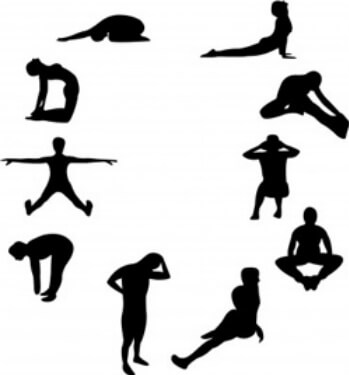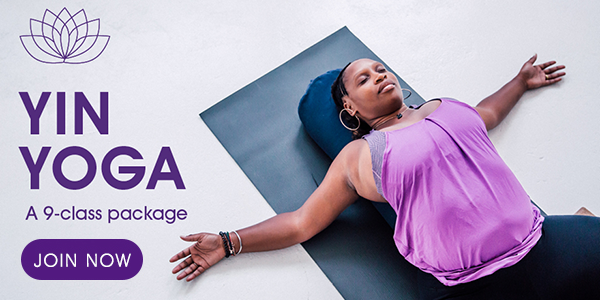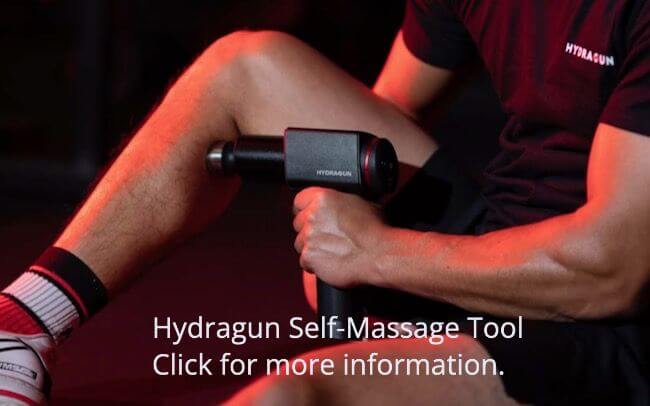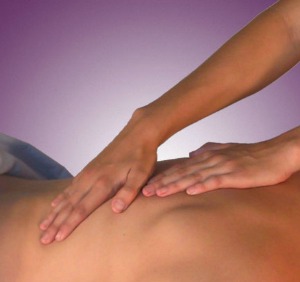As an Amazon Associate and affiliate with other programs, I may earn revenue from qualifying purchases through affiliate links. This does not affect the price you pay. Privacy Policy / Disclosures. This site is for educational purposes only.
Full Body Stretching Routine for Flexibility
A regular full body stretching routine, if done properly, can help keep your body flexible and supple. Let's look at a few stretching benefits and guidelines, and then I'll give you a basic stretching routine.
The benefits of stretching include getting through your daily activities easier and with less tiredness, because supple muscles use less energy. A flexible body helps you do any physical activity better, ranging from golfing to running to dancing to love-making. By maintaining a full range of motion, you also improve your balance and coordination. Releasing muscle tension also promotes stress relief.
Safety Guidelines
Follow these safety guidelines for your full body stretching routine:
- Warm up first. Stretching cold muscles increases your risk of injury. Even 5 to 10 minutes of walking or jogging in place is a good warm up.
- Move slowly and gently. A proper stretch creates slight tension in the muscle. Anything more intense will likely activate the stretch reflex, which causes muscles to tighten rather than lengthen.
- Relax and breathe freely.
- Hold each stretch for 15 to 60 seconds. (This recommendation is for basic static stretching. Note that some types of stretching—for example, dynamic stretching and active isolated stretching—are done differently.) NEVER BOUNCE because it can cause injuries.
- Do your full body stretching routine consistently.
- Listen to your body and stop if you feel pain or something doesn't feel right.
- Tailor stretching to your activities. Different activities stress the body in different ways. Pay attention to tight areas. By developing a full body stretching routine based on your strengths and weaknesses, you avoid lengthening already overstretched muscles and missing tight muscles that need more flexibility.
Full Body Stretching Routine
The following basic static stretching exercises provide a place to start your flexibility training. Tailor to fit your needs. Move only as far as is comfortable in each stretch. If you experience pain with any technique, stop doing it.
Neck and Shoulder Stretches
Always be gentle when stretching your neck.
- Sit or stand with your spine straight.
- Exhale and let your head drop forward. Relax into the stretch for the desired length of time, and then lift your head to the center.
- Let your head drop to the right side, relax and stretch, and then return to center.
- Let your head drop to the left side, relax and stretch, and then return to center.
- Turn your head to the right, relax and stretch, and then return to center.
- Turn your head to the left, relax and stretch, and then return to center.
- With your face forward, push your head forward and then back, moving gently forward and back several times. No need to hold the forward or back position for more than a couple of seconds.
Neck stretch variation: Drop your head to the right side, place your left hand on the left side of your face, and then push your head gently into your hand for a few seconds. Then, slowly release, move your head halfway back to center, and again push your head gently into your hand for a few seconds. Release your head back to center. Repeat on the other side.
How to Stretch Shoulders
Shoulder Shrug: Sit straight with your shoulders relaxed. Inhale and lift your shoulders toward your ears. Hold for several seconds and relax as you exhale. Repeat several times.
Shoulder Circles: Slowly make small circles with your shoulders, going forward, and then going backwards.
Wall Shoulder Stretch:
- Stand facing a wall.
- Place your hands flat on the wall at about chest level.
- Walk your feet back and bend forward at your hips until your torso and arms are in alignment.
- Relax and stretch, and then return to standing.
Arm and Chest Stretches
Inner Arm and Wrist Stretch:
- Kneel on your hands and knees.
- Turn your hands so they point toward, rather than away from, you.
- Press your gently hands into the floor.
- Relax and stretch, and then release.
Triceps Stretch:
- Stand.
- Lift one arm over your head.
- Bend the elbow of that arm so that your hand hangs behind your head.
- Using the other hand, grab the bent elbow and gently move it toward your head.
- Relax and stretch, and then release.
- Repeat on the other arm.
Chest Stretch:
- Stand upright.
- Interlace your fingers.
- Place your hands on top of your head, palms facing up.
- Gently move your hands and elbows backward.
- Relax, stretch, release.
How to Stretch Your Back
Also see back care tips.
Cat and Cow:
- Kneel on your hands and knees, back flat.
- Inhale while dropping your abdomen and raising your head.
- Exhale while lifting your abdomen and dropping your head.
- Move slowly and smoothly for an many repetions as you like,
Note: You can do the following spinal twist and knee drop either by moving slowly from side to side without holding a stretch or by holding the twist for 15 to 30 seconds on each side.
Spinal Twist:
- Sit or stand straight.
- Clasp your hands behind your head.
- Exhale and slowly turn your upper body to the right, looking behind you as you twist as far as comfortable without strain.
- Inhale as you return to the starting position.
- Repeat on the other side.
Knee Drop:
- Lie on your back, knees bent, feet flat on the floor. Keep your shoulders relaxed and flat on the floor.
- Let your knees drop to one side only as far as they will go comfortably.
- Relax and stretch and then bring your knees up again.
- Repeat on the other side.
Note: If your head is uncomfortable on the floor, use a hand or pillow to support the back of your head.
Child's Pose
- Kneel on the floor, bring your buttocks as close to your feet as possible.
- Reach both arms in front of you, bending forward and placing your hands on the floor.
- Create a stretch in your back by extending your hands forward while extending your buttocks toward your feet.
Video: Lower Back Stretches
Stretching Exercises for Legs and Hips
Hip Stretch
- Sit on the floor in a cross-legged position.
- Reach your arms forward, placing your hands on the floor, and bend forward at the hips.
External Rotation of the Hip Joint
- Sit in a chair.
- Rest one ankle on the opposite thigh.
- Lean forward and rest your forearm on the inside of the bent leg.
- Lean further forward, pressing your forearm into the leg. Relax and stretch, and then return to starting position.
- Repeat on the other leg.
Quadricep (rectus femoris) and front of hip stretch:
- Lie on one side, arm supporting your head.
- Bend your top knee, bringing your foot toward your butt, and grasp your foot or ankle with your hand.
- Move your thigh backward, holding for the desired time. Release.
- Repeat on the other leg.
Note: If grabbing your ankle is difficult or doing so causes knee pain, just move your straight leg backward.
Hamstring stretch:
- Stand upright. Extend one leg in front of you and rest its foot on a stair or low stool.
- Exhale, and slowly lean into the leg until you feel a comfortable stretch. Stretch for 10 to 30 seconds and then release.
- Stretch the other leg.
Calf stretch:
- Stand with your toes almost touching a wall.
- Place your hands on the wall at shoulder height. Lean into your hands.
- Keeping your toes pointing straight forward, step one leg backward only as far as that foot remains flat on the floor but far enough you feel a comfortable stretch in your calf when you lean into the wall.
- Repeat on the other leg.
Video: Leg Stretches
Image credit: maluson/123RF Stock Photo








